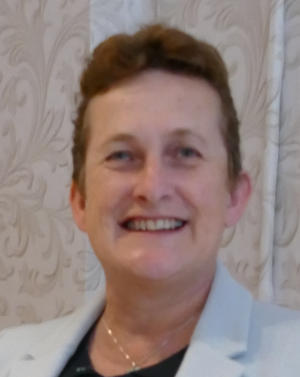Lucy Lewis: First Woman
Thu, Jul 28th 2022 at 7:00 pm - 9:30 pm
The first woman Bomb Disposal Officer

The title today’s speaker Lucy Lewis gave her talk, “First Woman”, was intriguing. It turned out that she was the British Army’s first-ever Bomb Disposal Officer.
You might think this was a subject full of doom and gloom but Lucy gave us a very entertaining talk full of humour.
In her early twenties she was working as an airport Security Officer. She decided that she would only gain promotion if she had some experience with the police or the army. She went to a Territorial Army taster weekend. She enjoyed it so much that she opted to join the Regular Army and entered Sandhurst as a cadet officer. She was one of 48 women; there were 350 men.
 At the time the army was opening more roles to women, although they still weren’t allowed to engage in direct combat with the enemy. When she graduated Lucy was told that she was to be trained as a Bomb Disposal Officer, much to her parents’ alarm.
At the time the army was opening more roles to women, although they still weren’t allowed to engage in direct combat with the enemy. When she graduated Lucy was told that she was to be trained as a Bomb Disposal Officer, much to her parents’ alarm.
One of the training tasks she was given was to design a bomb that would kill her and no one else. This was to demonstrate just how easy it is to build a bomb to target a particular individual. She was sharing accommodation with four male officers. She realised that she was the only one who used the washing machine on the “delicate” setting. The male officers all tended to use the machine on full at the highest temperature. She therefore designed a small bomb that would sit behind the washing powder dispenser and only be triggered when certain buttons were pushed.
She spoke about clearing minefields. It is important to identify the types of mine that have been planted. If they are anti-tank mines you can safely walk through them. If they are anti-personnel mines you can safely drive through them.
On a training exercise with the Territorial Army those taking part had to cross a minefield in the dark. She reckoned that the TA officers were taking an amateurish approach compared to the one she had been taught, with the result that they were far in front of her. She decided to prove a point by using her training to disarm the mines as she went. She then discovered that she was trying to disarm a crusted cowpat! She never lived it down.
On another exercise she had to blow up a bomb that had been buried on a beach in Southend. She did it successfully but unfortunately a 1,000 lb bomb had been used instead of the intended 100 lb bomb. She and her squad had only retreated 100 metres instead of the kilometer required for that size of bomb. Both her eardrums burst, the soldiers with her also suffered injuries and nearby buildings lost their windows.
She later joined the Royal Military Police and served in a variety of places, including Northern Ireland during the Troubles. There the IRA would fix a bomb to a door so it would kill the first person to open it. To counter this the troops would fire a rubber bullet at the door lock from 15 feet away. The bullet would break the lock and force the door open. When she tried to do this during training she hit the door frame instead and the bullet bounced back to clip her ear. She claims she was given a sharpshooting award on the grounds that she was the only person ever to shoot themselves in the head at a distance of 30 feet.
She did say that some of the things she had to do as a Bomb Disposal Officer were scary but she always had great support from the units with her and had confidence in them.
Someone raised a question about disposing of IEDs in places like Afghanistan. She said this required particular care because no two IEDs were identical even if they had been made by the same person and looked the same. They could be triggered by different actions.
One type of IED used in Afghanistan contained glass fragments and Warfarin. These were intended to harm the soldier and cause him to bleed profusely without killing him. The insurgents would then await the arrival of a rescue helicopter and try to bring it down. One question one always had ask oneself was “What is this device intended to do?”
'What We Do' Main Pages:










